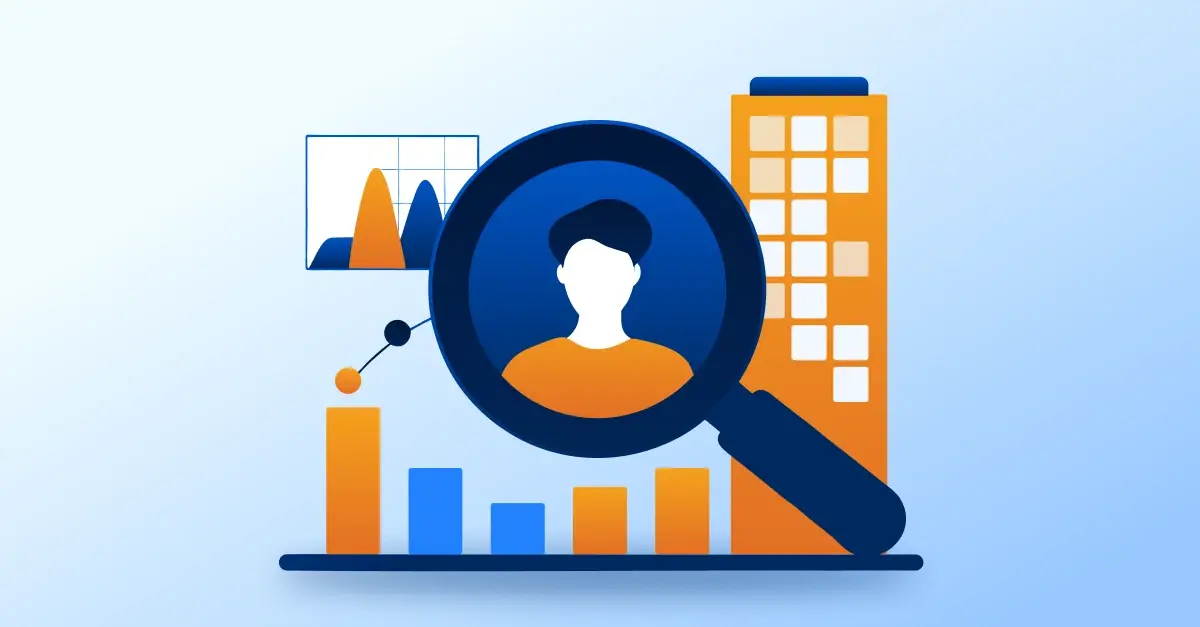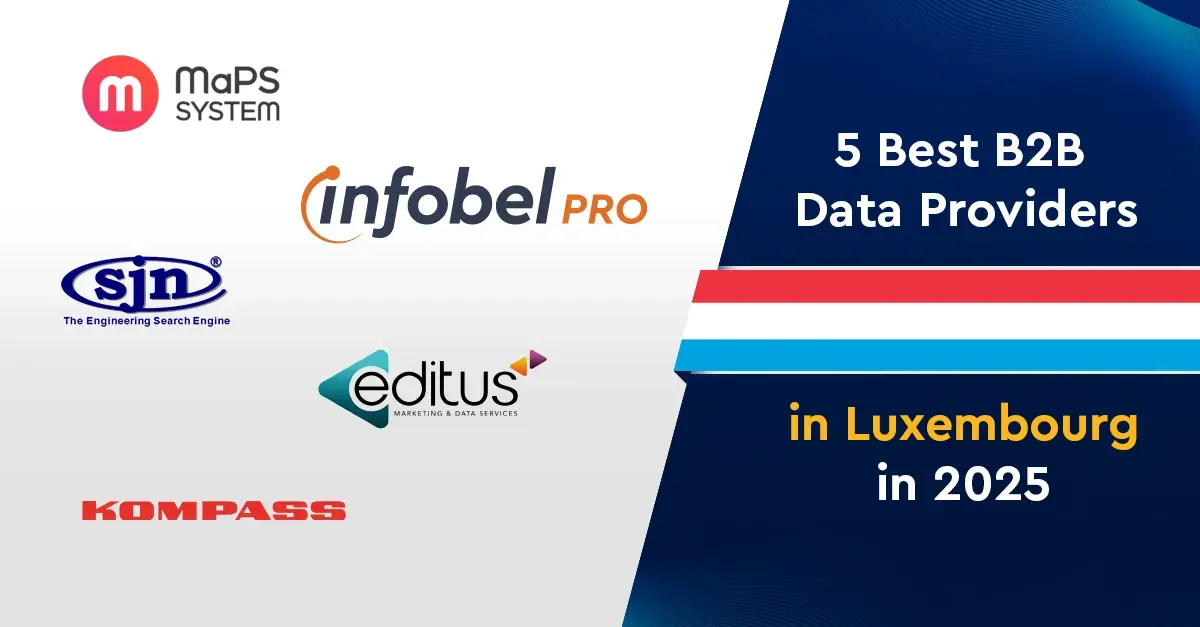With the emerging and fast-paced competitive landscape of modern business, understanding and connecting with your customer profiles is of immense priority. It is one of the major prerequisites for success.
This evolution of digitalization makes it mandatory to understand the transcending customer expectations, therefore, making an Ideal Customer Profile is strategically imperative.
Let us delve deeper into understanding the role of an Ideal Customer Profile while uncovering its significance and including some of the practical insights that help in its construction.
Right from the understanding of the fundamentals of the target market to the depths of practical steps included, there is a navigation through the intricacies of crafting an ICP while providing a user-friendly and ideal client profile template to streamline the process.
What is an Ideal Customer Profile?
An Ideal Customer Profile (ICP) is a tool that strategically serves as an elaborative and semi-fictional representation of analyzing the perfect customer for your business.
It is not just limited to analyzing demographic data but delves into the details of customer behaviour, preferences, and pain points.
It acts as a guiding light which helps in strategizing your marketing, sales, and teams for product development which ensures that their efforts are in alignment with the needs and desires of the most valuable customers.

Purpose of an ICP
The major purpose of an ICP is to set coherence for business strategies adeptly keeping the total addressable market in mind. A clear definition of the characteristics and preferences of your target market helps align marketing efforts, tailor marketing products and marketing services, and optimise your resources.
These alignments help reach enhanced customer acquisition, improved customer retention, and sustainable business growth.
Benefits of an Effective Ideal Customer Profile:
a) Increased Marketing Efficacy
Having an understanding of your ideal customer profile is not only helpful in adhering the focus to the right marketing strategies throughout your sales team in various channels that are most likely to resonate with them.
This approach is targeted to not only increase efficiency but also ensure that your resources are used effectively.
b) Targeted Messaging
Crafting messages that speak directly with the characteristics and preferences of your ideal customer with respect to forming an ideal customer profile results in more impactful and resonant communication.
These aligned marketing messages are more personalized which also increases the likelihood of grabbing the attention and interest of your target accounts.
c) Enhanced Customer Satisfaction
Aligning products or services following the specific needs and preferences of your target customer is relatively helpful in increasing customer satisfaction.
Satisfied customers are more intuned to become repeat customers like advocates while aligning and promoting your brand through positive word of mouth.
d) Improved Conversion Rates
A well-defined ICP enables sales teams to tailor their sales strategies through the unique buying behaviour and preferences of their target audience.
This aligned approach improves the likelihood of converting customers, driving higher conversion rates, and improving the overall customer journey at the end of the sales team.
How to Create an Ideal Customer Profile

(i) Market Research
The journey of customer profiling renders crafting a compelling ICP that begins with detailed comprehensive market research of the customer base. It is inclusive of understanding the customer insights and landscapes of the industry, analysing key competitors, and gathering potential customer data. Integration of a blend of online tools, surveys, and interviews that help gain insights into market trends and customer expectations.
(i.i) Including Online Tools
Inclusion of online tools like Google Trends, SEMrush, or any industry-specific platforms that help in the analysis of market trends, relevance of keywords, and competitive landscapes.
These tools are rendered efforts of the customer success teams and, evidently, helpful for the sales team in fetching quantitative data throughout the sales process for forming the foundation of your ICP.
(i.ii) Conduct Online Surveys & Interviews
Engaging directly with the group of potential target customer/s and existing customers through online surveys and interviews helps uncover nuanced approaches through customer preferences, pain points, and motivations.
This research process is quite helpful in further enriching your Ideal Customer Profile through the perspectives of the real world.
(ii) Customer Segmentation
Segmentation of the customer base is another crucial step that helps in tailoring your Ideal Customer Profile effectively.
It is important to consider both demographic and psychographic factors that help create a multidimensional view of your target audience.
(ii. a) Demographic Segmentation Based on Customer Data

Collect basic demographic information like age, gender, location, and industry. This makes the initial building blocks for your ICP and provides a clear understanding of your customers.
(ii. b) Psychographic Segmentation
Dive into the psychographic factors like values, interests, and lifestyles. This segmentation is helpful in understanding the motivations and aspirations of your ideal customers which fosters more nuanced targeting and is helpful in creating an adept Ideal Customer Profile.
(iii) Identification of Pain Points & Needs
Resonating with your ideal customers to create an adept Ideal Customer Profile is only possible after understanding their pain points and needs.
This can be fostered through direct engagement held with customers through online surveys, interviews, and feedback.
These are helpful in the identification of challenges faced by the customers and help in positioning products or services as apt solutions.
(iii. a) Customer Interviews
Undertake one-to-one interviews with representative sections of your target audience. Shoot open-ended questions which encourage factors for the participants that share their experiences, preferences, and challenges.
(iii. b) Surveys & Feedback Forms
Curate surveys and feedback forms that help collect quantitative customer data based on customer preferences and satisfaction.
Make use of rating scales and specific questions that pinpoint variant areas where these businesses help address customer needs.
(iv) Analyzing Customer Behaviour

Understanding how customers propel interaction with your business is important for refining your ICP.
It involves leveraging the tools of data analytics for tracking customer behaviour across different touchpoints across the sales and marketing teams.
(iv. a) Website Analytics
Implement usage of tools like Google Analytics for adept analysis of website traffic, user management, and conversion rates.
Identification of popular pages, entry points, and exit points for understanding how customers navigate your site.
(iv. b) Analysis of Marketing Campaigns
Evaluate the performance of past marketing campaigns for framing a successful sales strategy.
This analysis helps identify channels and messages that have resonated most importantly with your target audience and provides insights into framing effective marketing strategies.
(v.) Understanding Buyer Persona?

A buyer persona is a semi-fictional and generalized representation of your target audience accountable for the demographics, goals, motivators, and challenges faced.
Buyer Personas help redeem structure and defined context for your organization. Buyer Personas are helpful in ruling out the marketing map helpful for curating content and other teams like those of sales and support in alignment with time and resource allocation.
An organization can have personas anywhere from two to five. Therefore, while determining the number of buyer personas the organization must have, it becomes a mistake to create a new persona for each job title that teams can communicate with.
Instead, there must be a consideration of the different challenges that individuals face.
For instance, instead of having personas like Marketing Manager Mary or Sales Rep Sam, we must consider creating personas like Recent Grad Rachel, or Start-up Steph.
This helps in laying focus on the day-to-day challenges encountered by services or products instead of titles. This makes it evident enough how these personas consume information while defining the ideal buying process.
Buyer Personas are based on detailed market research and real data about the existing customers. This has a lot of insight into your buyer's internal values.
While defining buyer personas, you can communicate with:
- Your customers
The audience that is already in collaboration with your product usage or services is the best audience to give you insights into perspectives.
- Your customer-facing teams
Setting interviews with the team in set up with people deliberately on the phone with your customers helps in gaining varying perspectives about the services or the products.
- Your CRM
CRM helps us gain crucial information that helps us gain insights on trends further helpful in accessing and consuming your content.
Crafting an Ideal Customer Profile Template
(a) Demographic Information
In the process of creating an Ideal Customer Profile, leverage a section to gather demographic information.
Implement prompts and fields for the collection of details such as age, gender, location, and industry.
These customer profiles help create a foundational understanding of your ideal customer's basic characteristics and analysis of buyer persona.
- Age Range
It is important to specify the preferred age range of your ideal customer profiles while considering how age is an important factor that influences buying behaviour, preferences, buyer persona, and technological adoption in creating an Ideal Customer Profile.
- Gender
Collect information on the basis of genre identity and buyer persona for your ideal customers.
This impacts marketing strategies and product design.
- Location
Understand the geographical location of your ideal customer profiles which influences shipping considerations, preferences of language, and regional variations in product demand and plays a crucial role in forming an Ideal customer profile.
- Industry
If applicable, the specification of the industry or sector that your ideal customer belongs to is an appropriate strategy to formulate a well-diversified Ideal Customer Profile.
This information is important for B2B businesses to target specific niches.
(b) Psychographic Insights
Devote a substantial segment of your Ideal Customer Profile template concerning psychographic information.
Implement prompts that promote a deeper understanding towards the values, interests, and lifestyles of your audience.
- Values
Uncover the core values as part of your customer service team which are in resonance with your ideal customer.
This is inclusive of environmental consciousness, social responsibility, buyer persona, or other guiding principles. Note that these are vital elements of an apt Ideal Customer Profile.
- Interests
Identification of the hobbies, activities, or subjects that collect the interest of your ideal customer.
This information comprises the content creation and engagement strategies.
- Lifestyles
Include the lifestyle choices of your ideal customer into consideration for analyzing buyer personas as it is helpful in creating an Ideal Customer Profile is a recommended choice.
Understand if they are urban dwellers, fitness enthusiasts, or work-from-home professionals. These details help in the creation of products and messaging while aligning with their lifestyle.
(c) Pain Points & Challenges
Form a designated space in your template of Ideal Customer Profile, it is important to document customer pain points and challenges.
Offer prompts that are in alignment with the identification of buyer personas and other crucial aspects that shape and resonate with customer behaviour.
- Pain Points
Analyze the specific challenges and frustrations of your ideal customers. This is inclusive of time constraints, budget constraints, or unmet needs of the current market scenarios.
- Challenges
Analyze the broader challenges that are presented to the ideal customer's industry and lifestyle.
Analysis of these challenges shall be helpful in positioning your business as a valuable solutions provider.
(d) Buying Patterns & Preferences
Involve a segment in your Ideal Customer Profile template which is focused on understanding the buyer personas and patterns of the customers.
Frame questions and categories that delve into the process of decision-making while marking preferred communication channels and noting factors which influence purchases.
- Decision-Making Processes
Understanding how these purchasing decisions are made by your ideal customers shall impact the formulation of the Ideal Customer Profile is another important step.
Analyze and know if it includes research, peer recommendations, or impulse buying and then tailor your strategies accordingly.
- Preferred Channels of Communication
Identify the channels of communication preferred by your ideal section of customers.
This might include social media, email, phone calls, buyer personas, or in-person interactions. These communication channels foster engagement.
- Factors Influencing Purchases
There are many factors that widely influence the purchasing decisions of our ideal customers and the need to form an Ideal Customer Profile.
These could be price, quality, brand rapport, or USPs. Understanding these messages and highlighting them in your marketing strategy is a great way to cover up while framing an ICP.
(e) Media Consumption Habits
There should be a dedicated section helpful in understanding where our target customer spends their time online.
Exploring these prompts related to the media consumption habits which comprises preferred social media platforms, frequent website visits, and influential publications.
- Social Media Platforms
It is important to understand where our target customers spend their time online. This can be easily done with the help of the marketing team and helps us in forming an adept decision to frame an Ideal customer profile.
Uncover the prompts related to media consumption habits for your target accounts which are inclusive of preferred social media platforms, frequent websites visited, and influential publications.
- Websites
For an apt business growth, it is vital to know which websites and online platforms your customers visit regularly.
These details regarding the buyer personas help in aiding strategic partnerships, affiliate marketing, and online advertising acing the marketing efforts significantly.
- Publications
Identify the influential publications or journals specified industry-wise followed by your ideal customers.
Being evident in these publications improves the brand's visibility within the sections of target accounts.
(f) Implementation and Refining Your Ideal Customer Profile
(f. a) Integration of Marketing Strategies with the Sales Team
With a section of detailed ICP at hand, the next step is to integrate it into your marketing strategies seamlessly.
Understand how businesses tailor advertising campaigns and formulate content creation, and social media engagement for aligning the characteristics and preferences as outlined in the ICP.
(f. a. i)Tailored Advertising Campaigns
Frame advertising campaigns in resonance with the values, interests, and lifestyles of your customer profiles.
Implement the use of imagery, language, and messaging which is in alignment with their preferences.
(f. a. ii) Creating Content
Curate content that hits uniquely the pain points and challenges of your as-identified in your Ideal Customer Profile.
This comprises creating blog posts, videos, or interactive content that address the unique needs of the customers.
(f. a. iii) Social Media Engagement
Optimize social media engagement with a focus on the platforms preferred by your ideal customer.
Join conversations, participate in relevant groups, and share the content in alignment with your interests.
(f. b) Feedback Loops & Continuous Improvement
Lay your emphasis on the dynamic nature of the ICP by highlighting the importance of feedback loops which are refined over time.
Solicit feedback from your customer profiles on a regular basis, monitor market changes, and curate your strategies to be in alignment with the evolving customer expectations.
(f. b. i) Customer Feedback
Actively take feedback from your customers through different surveys, reviews, and direct set of interactions.
This method of feedback aids in refining the understanding of customer needs and preferences.
(f. b. ii) Market Evolving Trends
It is important to stay intuned to the changes in the market landscape. There are shifts taking place in industrial trends, emerging technologies, or changes in consumer behaviour that necessitate adjustments to your Ideal Customer Profile.
(f. b. iii) Adaptive Strategies
Avail of an adaptive mindset throughout your organization. Adopt new tweaking related to your Ideal Customer Profile that corresponds with the strategies on the basis of evolving feedback and market dynamics.
Advanced Strategies for ICP Refinement
Predictive Analysis
Incorporate strategies of predictive analytics into the process of ICP refinement. Align the machine learning algorithms for the analysis of customer data and predict future behaviours.
This advanced approach is to proactively align the strategies based on desirable shifts in customer preferences.
- Data Collection & Analysis
Adhere to the process of robust data collection and analytics tools. These comprehensive datasets share accurate predictive models.
Analysis of these historical data helps in the identification of the patterns and trends for informing predictions.
- Machine Learning Algorithms
Data scientists help in the implementation of machine learning algorithms adeptly. These algorithms help in the analysis of complex datasets while identifying correlations and generating predictions about upcoming customer segmentation and behaviour.
Continuous monitoring and adjustments of these models help ensure accuracy.
Persona Evolution
Analyze the customer personas with a subsequent understanding of your ICP as changing entities. With emerging markets and shifts in consumer preferences, the set of ideal customer profiles witness changes.
Accept a proactive approach to the evolution of personas that helps you stay ahead of the industrial trends.
- Regular Persona Audits
Conduct regular audits with the marketing team of all the existing personas. Compare these concerning the market trends, while accurately reflecting the choices of your target customer.
This ensures the relevance of the ICP and alignment with the dynamic nature of the industry.
- Analysis of emerging trends
Stay connected with the emerging trends of the industry. This helps monitor consumer behaviour, technological advancements, and adherence to societal values.
Incorpration of these insights and trends in the ICP is an assurance of the true reflection of the evolving customer base.
Conclusion:
It is important to understand that creating an Ideal Customer Profile is not just a static task but an ever-continuing journey leading to refinement and adaptation.
This investment of time and effort helps to gain a deep understanding of your customers at profound levels while paving the way for the success of the business advents.
Include the template that acts as a practical tool for guiding you through the process of defining, identifying, and engaging with your ideal section of customers.
Understand that a well-crafted ICP is not just a documented dynamic strategy but an evolution of the business principles along with the customers.
Heading on the journey implies staying committed to the principles of adaptation and customer-centricity.
The most crucial aspect is that an Ideal Customer Profile is not just a roadmap but a compass that guides you through the business leading to lasting success and an ever-evolving landscape.





Comments